
- Boat Reviews
- Retro Boats

What Cat 1 inspectors want

We have a Cat 1 Safety Certificate requirement for New Zealand-flagged vessels departing on an international voyage. It dates back to 1956 and has had various iterations. In a nutshell, under the Maritime Transport Act, the Director of Maritime New Zealand must be satisfied that the vessel, its equipment and crew, are suitable for the intended voyage. Yachting New Zealand and its network of Inspectors fulfill this requirement on behalf of the Director.
The issues surrounding the Cat 1 Safety Certificate are entrenched in the New Zealand international sailor’s psyche. Every year many hours are spent by what appears to be an increasing number of people debating the different issues surrounding yacht inspections.
Whatever your opinion of Cat 1, it’s a requirement for a New Zealand-registered vessel intending to leave the country. When approached in a constructive manner every sailor will gain from the process of gaining the certificate.
Should a skipper prefer not to undertake the process, there are several international registers that, for a fee, will accept a small vessel. Once that vessel is foreign-flagged, it does not have to comply with the Cat 1 inspection process. I do not support this option for several reasons, but they are not relevant to this article.
IN WATER INSPECTION
This is the greater part of the inspection and can be divided into Vessel, Equipment and Crew. For Equipment, lay it out in the order that it appears on the checklist, so the inspection is easier.
- Stability: Does it meet the stability requirements for Cat 1 as defined in the regulations? Some older New Zealand-built or -designed vessels with a history of voyages already undertaken can be grandfathered in. For example, the Farr 11.6 (38) does not meet the stability requirements under Cat 1 but is well-proven offshore.
- Suitable construction: This is a difficult area and to a certain extent has been helped by the CE classifications of European production vessels. Vessels like the Townson 32 typically are unsuitable for offshore conditions. They were never intended to venture offshore, but several have been modified and strengthened to do so.
- Cockpit drainage: There are volume calculations available.
- Companionway: It must be able to be secured from above and below. For example, a crew inside must be able to exit when the companionway is secured and vice versa. If washboards are fitted they should have lanyards to ensure that they can be secured to the vessel.
- Life lines: In good condition, correctly-sized, stanchions correctly spaced, tight and at the right height.
- Jack lines: adequate breaking strain (2,200kg), good condition, well thought out leads so that a crew can work the full length of the deck without unclipping.
- Standing rigging: the inspector will look carefully (up to head height) however the inspection is not a rig check. Pins or lock nuts on the rigging screws.
- Running rigging: in good condition, not chafed or damaged.
- Gooseneck: this is a weak point on every rig and requires constant monitoring and maintenance.
- Deck gear: (winches, clutches, deck organisers, turning blocks) undamaged and working correctly. Layout that is easy to handle.
- Sails: the Inspector will ensure that the sails meet the regulations.
- Steering gear: is working correctly and does not show signs of wear.
- Emergency steering: this should be able to be demonstrated if required.
- Navigation lights: working and correctly-configured.
- Lockers, freezer tops, bunk tops, cabin soles: are secured so that in the event of a knockdown they cannot become loose and the contents spilled across the cabin.
- Windows – meet the requirements as specified . This is a controversial area and will take some navigating. The intent of the regulation is that the vessel cannot lose a window therefore there will be a range of options to ensure that this doesn’t happen. Working with the Inspector will ensure that this doesn’t become a stumbling block.
- Gas installation: if the vessel has gas installed a current installation certificate is required.
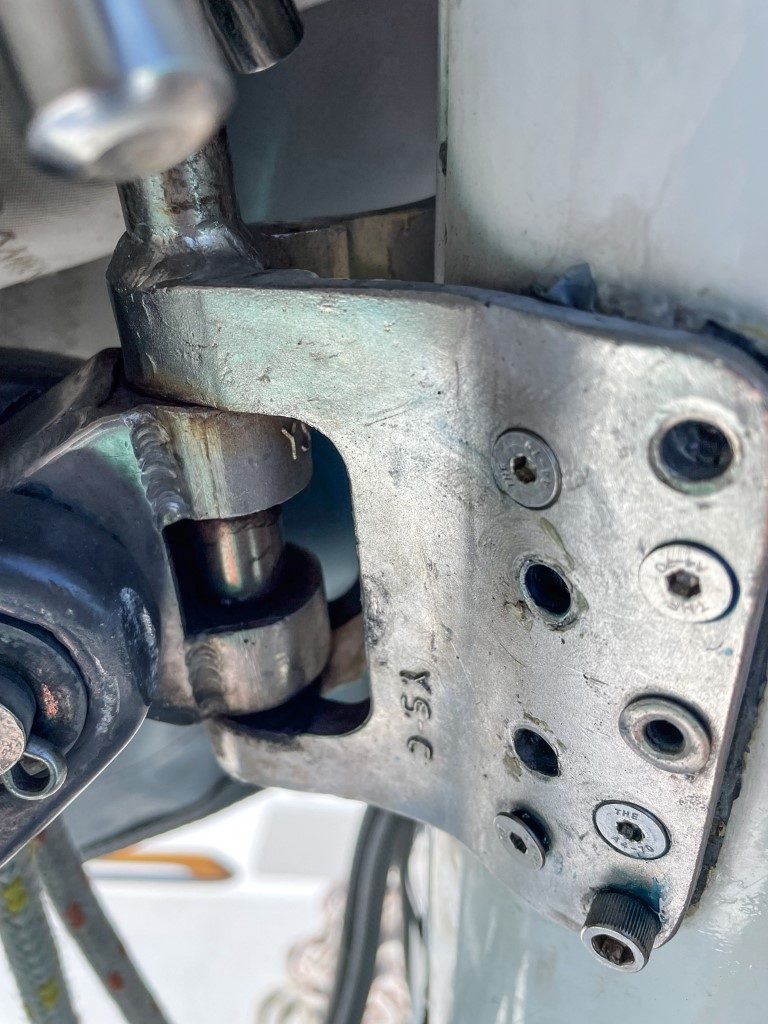
- Liferaft: in service, correctly-sized for the number of crew. There are liferafts and liferafts – ensure yours meets the regulations. That is – manufactured to ISO9650 specifications, packed to more than 24 hours, and an ‘ ocean’ category raft.
- Life jackets: in service, lights and crotch straps fitted. Many people will add personal AIS and/or a personal locator beacon (PLB), but at this stage it’s not required for Cat 1.
- Harnesses and tethers: most crew are using life jackets as a harness so the Inspector will check that there is the correct number on board and that they are in serviceable condition.
- Life rings x 2: one with light, dan buoy, whistle and drogue; one with whistle and drogue. Most vessels will be using an inflatable option so the Inspector will require the service certificates and be satisfied that the crew are confident about using the equipment.
- First-aid kit: as specified in Appendix 1 of the Safety Regulations of Sailing. This kit is modular so the Inspector will look carefully to ensure that it has all of the relevant modules. The kit has been carefully specified and the required training supports the use of the kit, so don’t try to shortcut the requirements.
- VHF radio: the Inspector will require a radio check while on board, also handheld VHF radios. The Inspector will assess operator confidence using the equipment.
- Offshore communication: an email and voice call from the Iridium, a radio check on the SSB, or an email, voice call and confirmation that the Star Link is configured for offshore use. The requirement for voice communication is clearly specified in the regulations. As with VHF radios, the Inspector will assess operator confidence level when using the equipment.
- Flares: The Inspector might well hand you one and ask you how to fire it. For those of us who wear glasses, having a spare pair in the flare container, along with a leather glove, is a very good idea.
- Bilge pumps: working and correctly-configured.
- Tools: a well thought out tool kit that can be used for the equipment on the vessel.
- Spares: adequate spares to ensure that the vessel can get to a port for assistance. The list can be extensive and varies by boat, but as a minimum: screws, bolts, deck gear, line, fuel filters, oil filters, belts, engine and gearbox oils, and impellers. We left New Zealand with a minimal spares kit and are in the process of sourcing spare alternators (they are hard to source in Southeast Asia).
- Navigation equipment: electronic charting with redundancy and a mixture of cruising guides and hard copy charts for the intended destination.
- Manuals for the equipment on the vessel.
- Vessel manual: there is an example of a manual in the Safety Regulations. The intent of this requirement is to ensure the skipper and crew have thought specifically about their vessel. The manual ensures they are familiar with the equipment and the vessel, and have processes for reefing, abandoning ship, firefighting, man overboard etc. If the skipper is unavailable, the Vessel Manual ensures that the vessel can be run safely and efficiently. It doesn’t have to be elaborate, and a hand-written version is entirely acceptable provided it is relevant and up to date.
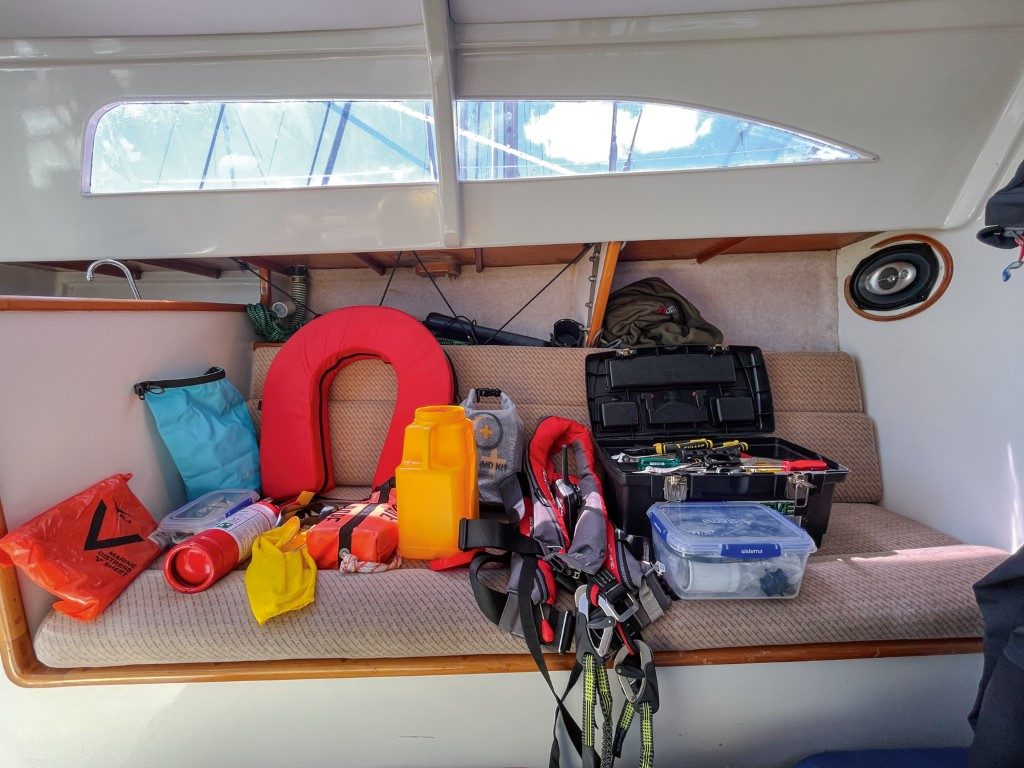
- Is the crew adequate for the voyage proposed? At least one person who has undertaken a similar voyage. Half the crew, or a minimum of two people, must have done the Advanced Sea Survival course. I assessed these courses and over the years participated in seven across different providers. Some were better than others and one provider in particular is making an ongoing effort to constantly improve its offering. I learned something in every course, so it’s a matter of keeping your mind open. The courses are valid for five years and are approved by World Sailing for ratified events. One of the providers offers a refresher you are eligible for if your last course was within the last 10 years.
- Offshore Medic: At least one crew member must have this qualification, but two is better. It is a great course that is designed around the first aid kit and has a significant practical component.
- Drills: man overboard, firefighting, abandoning ship, reefing, heaving to, emergency steering etc. Practising is part of voyage preparation. The Inspector will seek to understand whether your crew has the skills and can work together as a team. Having the equipment and not being able to use it is as bad as not having the equipment at all.
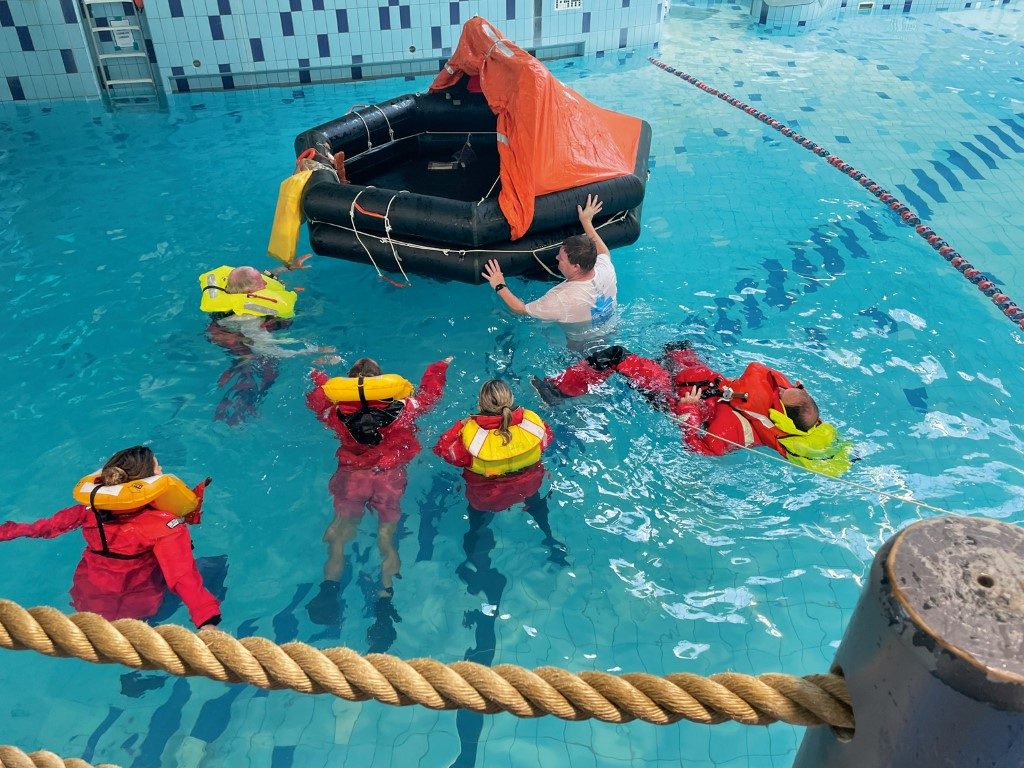
OUT OF WATER INSPECTION
THIS IS TO BE UNDERTAKEN within six months of the intended voyage and before fresh antifouling paint is applied. The timing should be taken into consideration while preparing for the voyage and it is sensible to tie it in with other jobs to be completed before departing.
Keeping in mind that the Category 1 process is an ‘inspection’ not a survey, the Inspector will be interested in the following:
- Rudder bearings: How much movement can be observed when moving the rudder from side to side and fore and aft. When a vessel sails a few hundred miles a season, movement in the bearings is unlikely to create an issue and can be rectified easily. However, with over 1,000 nautical miles to sail, compromised bearings will create difficulties that become a logistical challenge in even the larger international centres frequented by New Zealand cruising yachts
- Hull keel joint: There shouldn’t be any movement at this joint. There is much debate about tightening or inspecting keel bolts. As a guide, unless there are signs of movement at the hull keel joint, this area should be left well alone. The Inspector will be looking at the integrity of the vessel structure in addition to the joint to determine whether further investigation is warranted and will defer to a suitably-qualified expert to advise if in doubt
- Through-hulls and skin fittings below the waterline . I would like to say that this only affects older vessels, but Inspectors have seen new vessels with these issues. Inferior material appears to be the main offender but lack of maintenance and early detection of issues such as leaks are among the contributing factors. Every through-hull should have a correctly-sized wooden plug attached by a lanyard and double-opposing hose clamps. In preparation for our current voyage, I went through and checked the size of each plug and found several to be too big, despite them having been there for nearly 20 years! Hoses and skin fittings will be assessed for suitability
- Shaft bearings – cutlass bearings require a little movement for water to provide lubrication and support, but too much movement is an issue
- Propeller – movement in a feathering or folding propeller is an issue
- Anodes – should be correctly-sized and appear to be working as intended – pinking of propeller tips is a concern (an indication of electrolytic activity)
This is by no means a definitive list of an out of water inspection however it will provide an overview of the basics.

Castlepoint billfish

Zipwake uptake
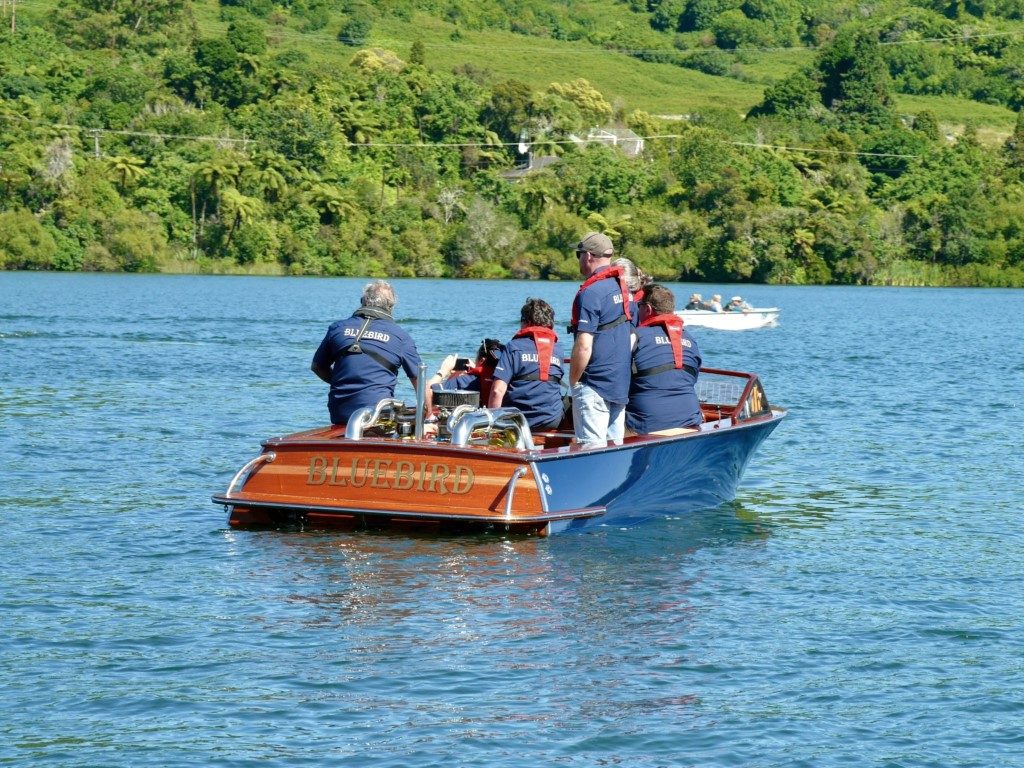
Labour of Love
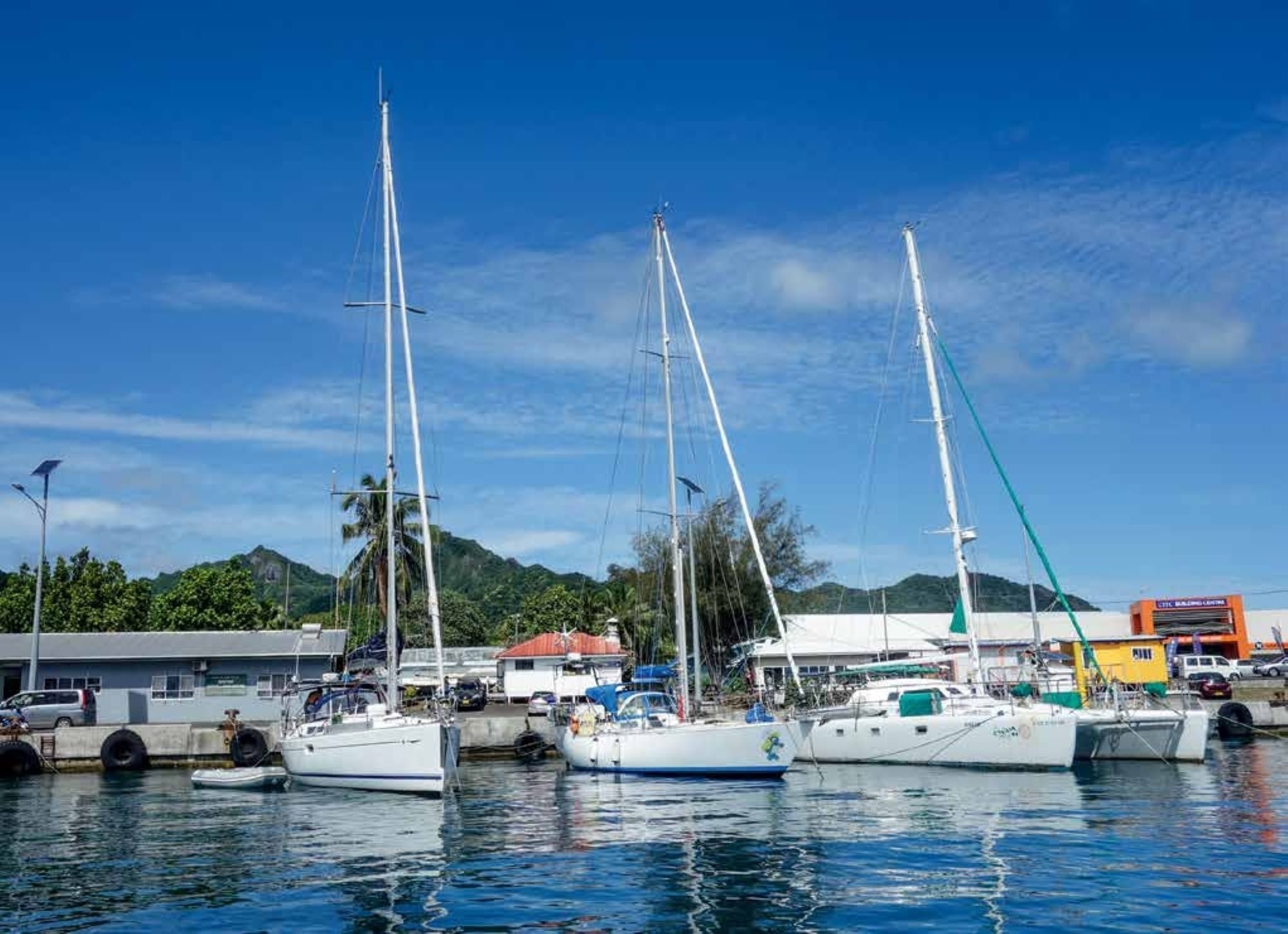
Tropical hopping
Privacy Preference Center
Privacy preferences.

CAT 1 Requirements for NZ Registered Yachts Heading Offshore
Booking safety inspectors.
Booking a safety inspector well in advance is highly recommended, as they can provide valuable feedback and recommendations to help you meet the CAT 1 requirements . It is important to note that these inspectors are independent and impartial, ensuring that your yacht is thoroughly assessed.
Medical Course and Sea Survival Course
In addition to the medical course, at least two crew members must have completed a sea survival course. These courses cover essential skills such as life raft deployment, emergency signaling, and first aid techniques specific to marine environments. By completing these courses, the crew will be better equipped to handle any emergencies that may arise during their offshore journey.
Preparation for the Boat
To meet the CAT 1 requirements, it is important to ensure that the yacht is properly equipped and prepared. Some key areas to focus on include:
- Safety Equipment: Check that all safety equipment is in good working condition and up to date. This includes life jackets, flares, fire extinguishers, and EPIRB (Emergency Position Indicating Radio Beacon).
- Navigation and Communication: Ensure that the yacht has reliable navigation and communication systems, such as GPS, VHF radio, and radar. Test these systems before setting sail.
- Emergency Procedures: Develop a comprehensive emergency plan and ensure that all crew members are familiar with it. This plan should cover procedures for man overboard, fire, medical emergencies, and abandon ship scenarios.
- Provisioning: Stock up on an adequate supply of food, water, and other essentials for the journey. Consider the duration of the trip and plan accordingly.
By thoroughly preparing the boat and ensuring that it meets the CAT 1 requirements, you can have peace of mind knowing that you are well-prepared for your offshore adventure.
Yacht Delivery Solutions with CAT 1 Qualified Skippers
If you are in need of professional yacht delivery services, it is essential to choose a company that has CAT 1 qualified delivery skippers and crew. Yacht Delivery Solutions with CAT 1 qualified skippers offer the expertise and experience necessary to safely deliver your yacht to its destination.
Whether you are purchasing a new yacht or need to deliver your existing one, entrusting the delivery to CAT 1 qualified skippers provides peace of mind and ensures a smooth and safe journey.
In conclusion, meeting the CAT 1 requirements for NZ registered yachts before heading offshore is crucial for the safety and well-being of the crew. By booking safety inspectors, completing medical and sea survival courses, and thoroughly preparing the boat, you can ensure that you are well-prepared for any challenges that may arise. Additionally, when seeking yacht delivery solutions, opt for CAT 1 qualified skippers and crew to guarantee a safe and reliable delivery service. Feel free to drop us a line and we will be happy to help any way we can!
You May Also Like
Oceanis 55 yacht delivery review: a smooth crossing from gold coast to auckland, lagoon 440 yacht delivery review, protecting new zealand’s pristine waters: a guide to yacht delivery and biosecurity, leave a reply, cancel reply.
Save my name, email, and website in this browser for the next time I comment.
Astrolabe Sailing
Sailing, yachts, adventure and sailing around the world, yachting nz cat 1.
If you own a New Zealand registered yacht and are planning on sailing it offshore, you need to comply with the Yachting NZ Category 1 safety regulations.
As NZ is many hundreds of miles from any other countries, these safety regulations mean that boats are seaworthy and equipped with all the gear needed to make an offshore passage, and the crew are competent, and able to make the voyage.
Internationally registered yachts are exempt from this requirement, and they can leave without this inspection.
There is also Category 2 – which after you clear out of the country Category 1 status reverts to Category 2, and there is also Cat 3, 4 and 5 for shorter coastal trips and sailing around the harbour.
The inspection needs to be done while the yacht is out of the water, and once it has been done it lasts for a month – so you need to get the inspection done just before you plan on heading overseas. This means that you need to be pretty well prepared before the inspection to avoid any surprises which could delay intended your departure date. It is worth engaging the services of your inspector early on in the process to seek their advice on any things that could be of concern and to give yourself plenty of time to get prepared for the final inspection.
There are heaps of things that need to be checked, from the structure and stability of the yacht, right down to the equipment held on board. You can download the rules here :
I have noted some of the major points below. There are also some structural standard requirements as well. Modern boats are made to CE ratings . You want category A for ocean going vessels.
Having the original design plans can be handy as can any stability reports.
- Steering – the rudder will be checked for strength, there must be an emergency steering facility, and any alternative steering methods need to be demonstrated by the crew
- Keel – documents and designs of the keel could be requested, the keelbolts should be accessible and able to be inspected and tightened
- Decks – there are lots of structural things that will be checked in regards to the deck.
- Cockpit and Companionway – Washboards should be able to be secured in position with the hatch open or shut, and secured to the yacht with a lanyard to prevent loss overboard. The hatch should have a strong securing lock which is operable from above or below. Cockpits should be self draining – and there are also more structural things that will be checked.
- Hull – the designer plans are useful here and again lots of structural checks will be performed.
- Flood Protection – the hull should be able to be made in to a water tight unit, hatches should be of adequate strength and able to be opened as an emergency exit, there should be bilge pumps in appropriate areas as well as two manually operated pumps which can be operated from outside. The bilge pump handle must have a lanyard. You must also have four sturdy buckets with a lanyard and 9ltrs capacity
- Mast Step & Chain Plates – the mast must be adequately stepped, preferrably spanning several floors, chain plates must be through bolted, the anchor fairlead must be low chafe, there should be a water tight mast collar.
- Masts, Spars, Rigging & Sails – Rigging should be to appropriate specs, shackles should have split pins, yachts with self furling sails shall have a separate means of setting a trysail and storm jib. Masts should have at least two halyards, bulldog clips for emergency repairs or non-stretch rope should be carried. You should have tools able to sever standing rigging from the hull – axe , hacksaw and 10 blades, hammer & drift, bolt cutters , Bosuns chair . Storm sails should be orange – one trysail and a separate trysail track with a spare main halyard. One storm jib and a heavy weather jib. A reef in the main of at least 50%, and a sail repair kit .
- Accommodation – ability to exit due to a fire in the galley or engine, toilet, bunks and lee cloths, ventilation, stove with safe fuel shut off valve, gas installed by a registered fitter, turn gas off at the bottle sign, galley facilities including a sink, water tanks and the ability to divide in to two separate containers, stored water of at least 2l per person per day for the duration of the voyage, ballast and heavy equipment stowed, yachts name on life jackets, harnesses and life buoys, LPG locker with vapor proof barrier and marked accordingly – just for use of LPG.
- Safety Systems and Equipment – three fire extinguishers – serviced and tested, fire blanket, lifejackets for all crew with light attached, splash hood, crotch strap & whistle, harness and jacklines for all crew – double clipped, names on harnesses and no longer than 2m, 3 hook tethers to be carried for at least 1/3 of the crew. survival suit or thermotic floation clothing recommended. Life raft capable of carrying entire crew – stowed on deck, painter attached to a substantion through bolted fitting and certificate of service. At least one life buoy marked with yacht name and fitted with drogue, pealess whistle, and self igniting light, one additional life buoy with drogue, pealess whistle, light, dye marker or pole with flag, heaving line – brightly coloured line with float at one end. Emergency knife in cockpit, axe, second emergency knife.
- Medical kit and Marine Medic training for at least 50% of the crew.
- Safety rails – handrails on deck, life lines and staunchions of a specific height, jack stays, toe rails, 2 x anchors with chain at least the length of the yacht and 60m of extra rope or chain, a second cable of 6m chain and 40m of rope or chain ready for use at any time and securely fastened.
- Sea Anchor or drogue or another device.
- Communications – SSB radio, VHF installed radio, VHF handheld waterproof radio, radio for weather bulletins, additional radio for grab bag , EPIRB 406 with GPS installed, Flares, spotlight and two torches – one must be floating and waterproof with spare batteries and bulbs. Compass installed with deviation card, hand bearing or spare compass, NZ Almanac, charts of area to be sailed, plotting equipment, cruising guide or sailing directions, tide tables, GPS and operating instructions, mounted and back up GPS. Sextant, table and ability to use, depth sounder, log, radar is recommended, barometer, radar reflector, radar target enhancer, AIS, navigation lights, emergency navigation lights, fog horn , yacht safety diagram
- Engineering system – refer to the booklet – batteries should be secured in boxes, fuel storage shut off valve, and sea cocks with plugs attached.
- Crew Skills – they need to demonstrate the ability to operate all equipment on board, and show knowledge of weather patterns and conditions, knowledge of collision rules, buoyage, rigging and cordage, boat stability, handling, survival at sea, handling emergencies, crew management, knowledge of navigation, operation of fire extinguishers, man overboard, storm sails, use of flares, use of radio, EPIRB, location and usage of life jackets and harnesses, location of grab bag, stowage and deployment of the liferaft and abandon ship procedures.
- Sail numbers and name – should be displayed on the hull and sail number on the main at least. Portable sail number in black figures on air/sea orange background 2m x 1m, V sheet indicating assistance required and yachts name on all floating items.
Yachtmail Chandlery have got a fantastic range of boating safety equipment on their online shop.
So download the rule book and start checking off the things on your safety list. Get in touch with the inspector early and make contact with them to book your inspection. Perhaps they might be able to offer some advice on how to prepare your boat before the inspection is done.
If you have had a Cat 1 inspection done on your yacht, please let me know how you got on and share any tips in the comments section below.
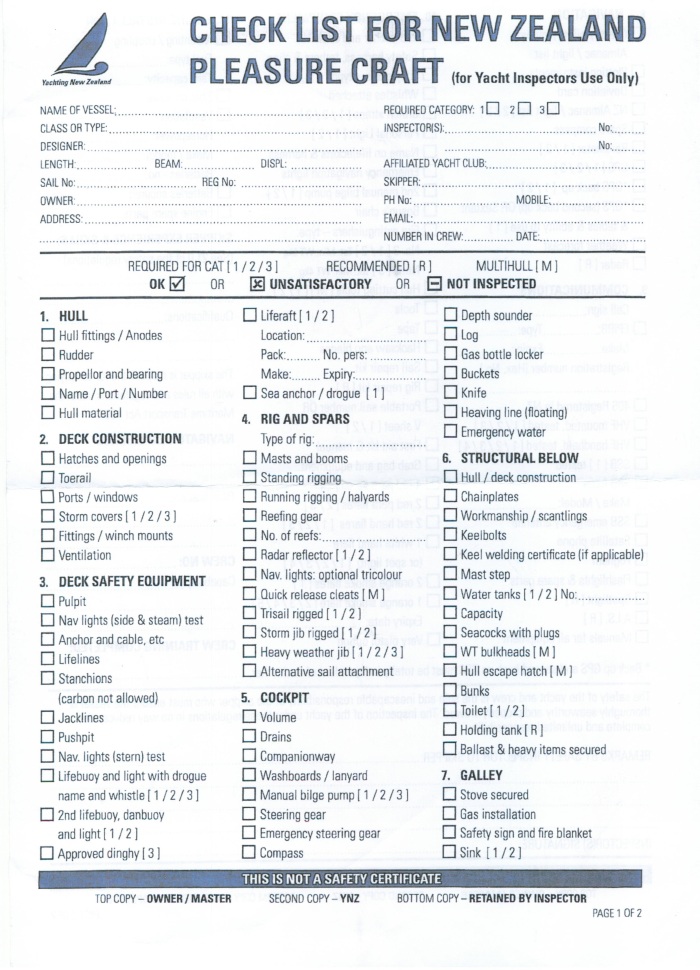
Share this:
Related posts.

Seasickness

Sailing Qualifications

Heavy Weather Tactics

Marine Medic

Flags & Signalling

Yachting NZ Medical Stores List

The Catlins Coast – New Zealand

5 thoughts on “ Yachting NZ Cat 1 ”
Pingback: Safety Equipment List | Astrolabe Sailing
Pingback: Ocean Yachtmaster | Astrolabe Sailing
Pingback: Coastal Skipper | Astrolabe Sailing
Pingback: Advanced Sea Survival | Astrolabe Sailing
Pingback: RYA Offshore Yachtmaster | Astrolabe Sailing
Leave a comment Cancel reply
This site uses Akismet to reduce spam. Learn how your comment data is processed .
- Already have a WordPress.com account? Log in now.
- Subscribe Subscribed
- Copy shortlink
- Report this content
- View post in Reader
- Manage subscriptions
- Collapse this bar

Picture perfect start. Photo Andrea Francolini/CYCA.
Offshore Safety – Category 1 vs Category 2
With the offshore season coming up soon, it’s time for all people contemplating going offshore to look at their safety equipment and training again. Not only is it a good time to consider existing safety equipment, it is also an opportune time to consider changes to safety regulations and developments in equipment. Each year safety regulations are tweaked to remain current, and to enhance sailor safety as much as possible. These changes and advancements in technology and processes mean the sport of sailing is getting safer each year. In addition, the start of the season is a good time to check that each sailor on a yacht has the necessary (and current) safety training. Not only is that training a necessary requirement for participating in races, it is essential in the case of an emergency. It is trite but true that good, well maintained equipment, and sufficiently trained crew members could save your life.
In this article I look at the differences and similarities between Category 2 (coastal) and Category 1 (offshore) safety regulations and requirements. Those regulations obviously inform any decision as to the suitability of existing equipment, and/or the need to acquire new equipment. The regulations also dictate what training and retraining each crew member requires.
I also highlight some of the tactical safety considerations any sailor should think about when planning their offshore season.
When I first began planning this article I intended to call it “A Step Too Far.” My initial impression was that the regulatory differences between categories of racing meant that moving from Cat 2 to Cat 1 was a complicated and expensive process. However, as I delved into this topic in more detail, I discover that such a shift is actually surprisingly easy.
What do the different categories mean?
Racing in Australia can be broadly divided in to three groups, inshore (Category 3), coastal (Category 2), and offshore (Category 1).
Racing in coastal water means that help and/or shelter is not too far away. There are often many bays and harbours within a few hours’ reach. However, in races such as Cabbage Tree Island (part of the Bluewater Pointscore Series), yachts can still encounter difficult weather. For this reason, no one participating in such a race should take their safety preparations lightly. Recognising both the relative easy “bail out” options, and the possibility of harsh conditions, the Cat 2 regulations require yachts to carry a comprehensive array of equipment. At the same time, the regulations also take into account the fact that help is likely to be close by.
Stepping up from category 2 to category 1
Stepping up from coastal racing to offshore races such as the Sydney Hobart, a greater level of preparation is required. This is so because significant proportions of those races take place a long way from help; yachts participating in these races need a great level of self-sufficiency. Again, the additional requirements of the Cat 1 safety regulations cover the differences between coastal and offshore racing in a comprehensive, yet reasonable, way.
The Yachting Australia special regulations applicable to Cat 1 races also contain additional, albeit minor, requirements for yacht structural integrity and stability from those required for Cat 2 races. Although not covered by this article, sailors should always check they meet those requirements before submitting any application to participate in an offshore race.
As to the additional safety equipment, the additional items required for Cat 1 races are surprisingly few. Essentially, all that is required are an additional torch, a more comprehensive medical kit, and a few more flares.
The more extensive differences relate to crew training. As noted above, the conditions the crew could face could be significantly more dangerous in offshore races than in Cat 2 races. For this reason it makes sense that Yachting Australia requires more of the crew to have greater training when participating in Cat 1 races. Untrained crew members are not only a risk to themselves, they also pose safety risks to their fellow crew members and any rescuers.
To participate in a Cat 1 race in Australia, 50% of the crew of each yacht must have undertaken a Yachting Australia safety and sea survival course. In addition, the boat is required to have two licensed radio operators instead of the one required for Cat 2 races. Finally, two of the crew members must hold a recognised first aid certificate. Again, all these additional requirements make sense in the context of the more dangerous conditions which sailors may face in offshore races as compared to coastal races. In addition, the differences recognise that a stricken yacht may have to be self-sufficient for a longer period of time when participating in a Cat 1 race than it would do in a Cat 2 race. In the event of an emergency, having two radio operators means they can man the radio in shifts, thus prolonging the time they can communicate with other vessels and the shore. Hopefully, enabling the radio operators to have some periods of rest will increase the accuracy of their broadcasts and make them more alert when receiving transmissions.
People matter
The focus on crew training and development in category 1 races reflects the reality that in the case of an emergency at sea more problems arise because of, and more people are harmed by, the actions of their fellow crew members than lack of specialised safety equipment.
If you are deciding to go offshore, keep this in mind when deciding which race to participate in and with whom. If the whole of a yacht’s crew is new to offshore races, they should think carefully whether each crew member, or a substantial number of them, should participate in some races with more experienced crews. As the old adage has it, there is no substitute for experience. In the case of any emergency, the more experience each crew member has, the more likely they are to remember their training and be more seasoned to the conditions. In addition, they may have experienced different approaches to certain situations. This way if a situation arises and one solution does not work, they will be able to rely on that experience to try different methods.
As the skipper of a yacht contemplating an offshore race, such crew decisions are also key. Not only are there issues about who should sail in each event, but the skipper should also think about rostering and who should be on watch at any time. Ideally, the two radio operators should be on opposite watches so one is as fresh as possible when the other is at their most tired.
In addition, the most inexperienced crew member should be on watch with the most experienced crew member. After that decision is made, the skipper should think carefully about other watch pairs: while it is tempting to continue pairing least experienced with most, this may not work if it means two only mildly experienced crew members will be on watch together.
Don’t let the step up from Category 2 to Category 1 be the reason for not participating, in fact if you can get to Cat 2, you are almost there. The bigger considerations are crew selection and training.
Consider your crew carefully and try to undertake the training as a team together, this will help your crew come together and work together.
– Ross Vickers
ALSO ON MYSAILING

The Sailor Girl adds to her team with Highfield

JPK Yacht Partners an investment and lifestyle asset

World Cup in Pozo Izquierdo – Day 8

ILCA Under 21 World Championship – Day 4

Day 7 of the Windsurfing World Championship

GSC – Louis Robein’s humble triumph

ILCA Under 21 World Championship – Day 3

Australia’s America’s Cup Campaign announces Waszp training partnership

Mortefon and Offringa, strong contenders for the first X Slalom crown


ILCA Under 21 World Championship – Day 2

Courtois, Aartsen, Groeneveld advance to Women’s Trophy Semi-finals

U21 and Masters finals at the World Cup in Pozo Izquierdo
Join Our Newsletter
- Name First Last
- Email This field is for validation purposes and should be left unchanged.

Read all of the latest sailing news

Dinghy and Yacht Racing News

News from the offshore world

Cruising Stories from around the world

Boats & Gear
The latest boats and yachting gear

Watch everything sailing and boating
Latest Sailing News, Racing, Cruising, Boats, Gear and more

International Voyage Certification (Pleasure Craft) (Previously CAT 1)
Cat 1 certification as it was colloquially known, is the certification that your vessel is required to achieve if you intent to take your vessel offshore – for example to the pacific islands. this has now been changed to an “international voyage certificate (pleasure craft)” and is now the responsibility directly of maritime new zealand..
Your vessel is required to be sufficiently robust in construction and have a crew that is suitably qualified to make the passage – IE Offshore survival courses completed, ability to complete repairs etc.
A qualified inspector will check the vessel hull and design, tankage, mechanical and fitted systems, accommodation, spares retention and crew before giving the certification.
Once attained, the certification is generally valid for 60 days and the certification expires upon reaching your intended destination.
CAT 1 cert is not required to get back into NZ.
If you intend to take your vessel off-shore, to the pacific islands or beyond – speak to us about how we can get your boat passed through the CAT one certification and ensure that it’s safe for the intended passage.
We can fit polycarbonate shutters over your windows, install side deck fuel bladders with fuel pumps and ensure you have the right safety equipment installed.
CAT ONE: What does it mean for Motor Yachts?
Maritime New Zealand Update Regarding Changes to the Certification Process:
From 1 July 2024
Detailed information about the changes will be made available soon on the Maritime NZ and Yachting NZ’s websites, and through a range of other channels. Some key things to know at this time are:
- From 1 July 2024, if you want to take your recreational craft overseas you will need to apply to Maritime NZ for an International Voyage Certificate (Pleasure Craft) (previously, you applied for a CAT I Certificate through a Yachting NZ Inspector).
- There is not intended to be any significant change to the vessel, safety equipment or crew adequacy requirements.
- There is also not expected to be a significant change in the costs associated with these processes at this time (noting that all fees are subject to review over time).
- Skippers and crew will experience some changes in terms of the process and documentation to be completed, and the terminology used for some things, however these are not intended to be burdensome and will be well-signalled.
- Maritime NZ is confident the process from 1 July 2024 will be efficient and fit-for-purpose for those seeking assessment under the section 21 requirements. To help ensure this though, we will be asking applicants to carefully check and follow updated guidance and processes from Maritime NZ when these are available.
- Maritime NZ has set up a dedicated email for skippers, crew and other interested members of the sector to contact us directly with your questions and enquiries, which is now active. You can contact us at: [email protected]
- Club safety remains a key focus for Yachting New Zealand, which will continue to manage their Category 1-5 inspections for boats competing in yacht races. If you are participating in a yacht race overseas (and your craft’s voyage starts in New Zealand), you will still need to meet the requirements under Section 21, and apply for an International Voyage Certificate (Pleasure Craft).
Maritime NZ will be continuing to engage with the sector as it implements the new process. As with all regulatory settings, it will keep the Section 21 regime under review when opportunities arise, to ensure it remains fit-for-purpose; again with input from the sector.
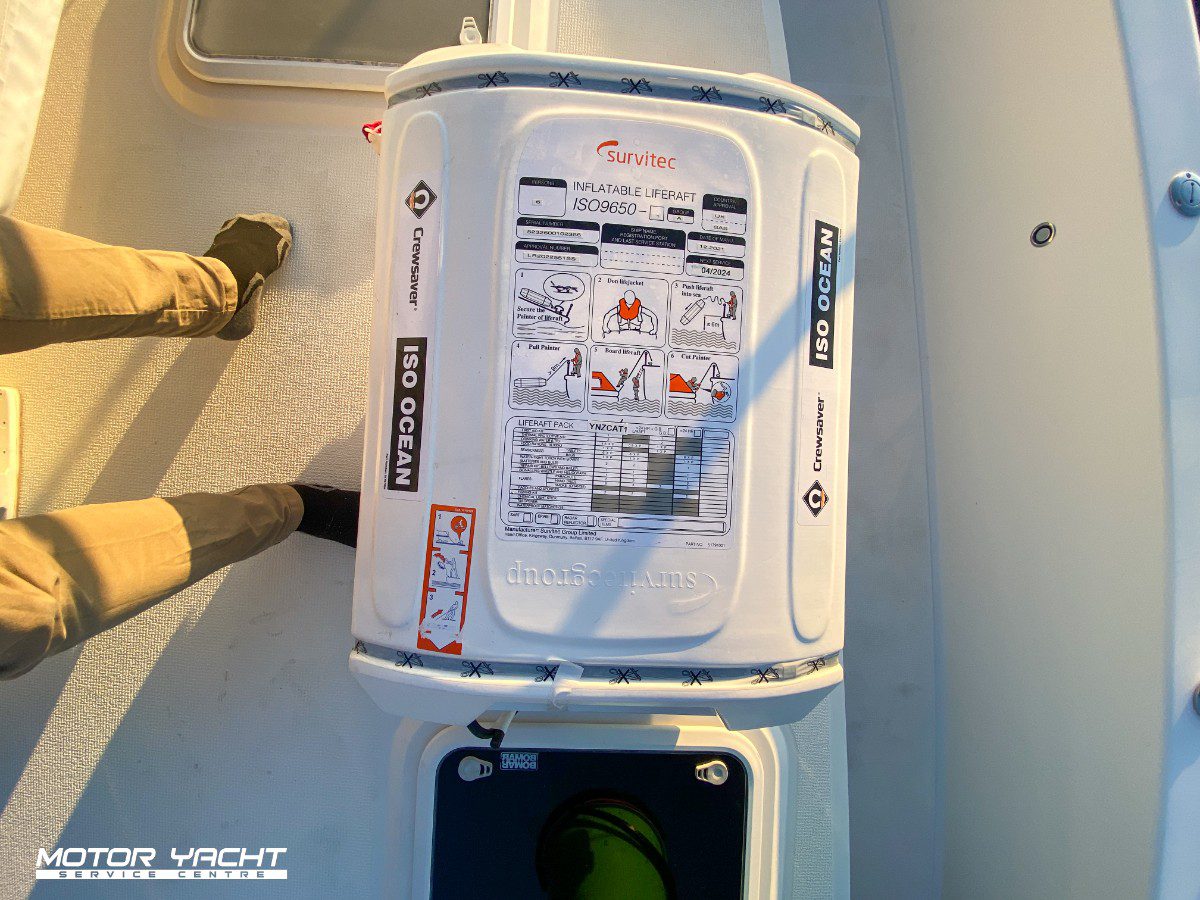
Motor Yacht Service Centre is the only boating partner you’ll ever need
Motor Yacht Service Centre is uniquely a one-stop shop for all servicing, improvement and repair needs for Luxury Motor Yachts. Contact us today to learn more about how we can help you.
Visit our Popular Forums
- Monohull Sailboats
- Multihull Sailboats
- Powered Boats
- General Sailing
- Antares Yachts
- Fountaine Pajot
- Lagoon Catamarans
Cruising Business
- Boat Classifieds
- General Classifieds
- Crew Positions
- Commercial Posts
- Vendor Spotlight
Life Aboard a Boat
- Provisioning: Food & Drink
- Families, Kids, & Pets Afloat
- Recreation, Entertainment, & Fun
- Boat Ownership & Making a Living
- Liveaboard's Forum
Seamanship, Navigation & Boat Handling
- Seamanship & Boat Handling
- Training, Licensing, & Certification
- Health, Safety, & Related Gear
- Rules of the Road, Regulations, & Red Tape
Engineering & Systems
- Const. / Maint. / Refit
- Product / Service Reviews
- Electronics: Comms / AV
- Electrical: Batts / Gen / Solar
- Lithium Power Systems
- Engines & Propulsion
- Propellers & Drive Systems
- Plumbing / Fixtures
- Deck Hdw: Rigging / Sails
- Aux. Equipment & Dinghy
- Anchoring & Mooring
Photo Categories
- Member Galleries
- Life Onboard
- Sailing in the Wind
- Power Boats
- Cruising Destinations
- Maint. & Boat Building
- Marine Life
- Scuba Diving & Divers
- General Photos
Recent Photos

Listing Categories
- African Cats
- view more »
- Crew Wanted
- Crew Available
- Enhance Your Account
- Meet the Mods
- Meet the Advisors
- Signup for The Daily Cruiser Email

| |||||||||||||||||||||||||||||||||||||||||||||||||||||||||||||||||||||||||||||||||||||||||||||||||||||||||||||||||||||||||||||||||||||||||||||||||||||||||||||||||||||||||||||||||||||||||||||||||||||||||||||








COMMENTS
Inspection costs. The full cost of an inspection is dependent on the time spent by the yacht inspector. The safety certificate is $115 for members of a Yachting New Zealand affiliated club. There is an additional cost of $75 for owners who are not a member of an affiliated club. These costs do not include the inspector's time and travel.
Yachting NZ will continue to manage their Category 1-5 inspections for boats competing in yacht races. If you are participating in a yacht race overseas (and your craft's voyage starts in New Zealand), you will still need to meet the requirements under Section 21, and apply for an International Voyage Certificate (Pleasure Craft).
NOTE: Yacht Inspectors may use their discretion as to the acceptability of items not listed. 3.10 Change from: Skippers of vessels over 20m and vessels that have been in MOSS (Maritime Operator Safety System) requiring a Category 1 certificate for customs clearance should contact a yacht safety inspector who must consult with Maritime New Zealand.
Stability: Does it meet the stability requirements for Cat 1 as defined in the regulations? Some older New Zealand-built or -designed vessels with a history of voyages already undertaken can be grandfathered in. For example, the Farr 11.6 (38) does not meet the stability requirements under Cat 1 but is well-proven offshore.
One Certification relate to my motor yacht. Please note that while this isn't an exhaustive list of requirements, it gives you pretty good understanding of what you'll need to do. At a glance the Category One certification can be a bit confusing as the literature seems heavily biased towards Sailing Yachts - but category one
Yachting NZ will continue to manage Category 1-5 inspections for boats competing in yacht races. If you are participating in a yacht race overseas (and your craft's voyage starts in New Zealand), you will still need to meet the requirements under Section 21, and apply for an International Voyage Certificate (Pleasure Craft).
Ensure the safety of your offshore sailing adventure by meeting the CAT 1 requirements for NZ registered yachts. Book safety inspectors, complete medical and sea survival courses, and prepare your boat accordingly. If you need yacht delivery services, choose CAT 1 qualified skippers for a safe and reliable journey. Trust the experts and enjoy your offshore adventure with peace of mind.
Yachting NZ Cat 1. Viki Moore / March 24, 2014. If you own a New Zealand registered yacht and are planning on sailing it offshore, you need to comply with the Yachting NZ Category 1 safety regulations. As NZ is many hundreds of miles from any other countries, these safety regulations mean that boats are seaworthy and equipped with all the gear ...
The Yachting New Zealand Yacht Inspectors Manual (Incorporating the Director's Guidelines for the application of section 21 of the Maritime Transport Act 1994), from herein referred to as the "Director's Guidelines", is a guidance document to the exercise of the discretionary power under section 21 of the Maritime Transport Act 1994.
To participate in a Cat 1 race in Australia, 50% of the crew of each yacht must have undertaken a Yachting Australia safety and sea survival course. In addition, the boat is required to have two licensed radio operators instead of the one required for Cat 2 races. Finally, two of the crew members must hold a recognised first aid certificate.
Motor Yacht Service Centre is the only boating partner you'll ever need. Motor Yacht Service Centre is uniquely a one-stop shop for all servicing, improvement and repair needs for Luxury Motor Yachts. Contact us today to learn more about how we can help you. CAT 1 certification is the certification that your vessel is required to achieve if ...
According to this, BP doesn't need a stability certificate to get Cat 1, but rather, "For non racing yachts the inspectors may use their discretion regarding stability, providing that they are satisfied the vessel is self righting from a knockdown that submerges the masthead."
Join Date: Jun 2019. Location: Bay of Islands New Zealand. Boat: Morgan 44 CC. Posts: 1,136. "New" requirement for NZ Cat 1 certification. The need for NZ registered boats leaving on ocean passages to have a Cat 1 certification has always been somewhat contentious. Now it has taken another step along the path of ridiculousness.
Safety Categories. Click here for Back Issues. Yacht races are classified as either category 5, 4, 3, 2 or 1 in the sailing instructions or notices of race. Category 4 or 5 is, in general, round-the-buoys type or short course racing in sheltered or warm waters. Compliance is self-regulated and requires only a skipper's declaration.
The SERs are easier for yacht owners and pre-race inspectors to understand. ... World Sailing OSR Category 1, 2: World Sailing OSR Category 0: Safety at Sea: Coastal Course. Online or in-person. ... to World Sailing the following MNA recognized courses that are accepted in the U.S. as meeting the first aid training requirements for Categories 1 ...
The World Sailing Offshore Special Regulations (OSR) govern offshore racing, structural features, yacht equipment, personal equipment and training.
Area Category 1 - Up to 150 miles from a safe haven. ... often a RIB will be lucky to get Cat 3, whilst a yacht may get Cat 0, but an owner may only choose to operate and equip the boat for Cat 2 waters. ... General equipment and fit-out requirements stated in MGN 280 refer to all commercial boats. There are also specific vessel requirements ...
Yachting NZ will continue to manage Category 1-3 yacht inspections for boats competing in yacht races. If you are participating in a yacht race overseas (and your craft's voyage starts in New Zealand), you will still need to meet the requirements under Section 21, and apply for an International Voyage Certificate (Pleasure Craft).
29 March 2016. The CE Yacht Compliance Classification System is the European (CE stands for " Conformité Européenne " in French) dictating the standards for CE Certification for construction and sale of boats. Vessels in one of the categories of controlled products cannot be legally sold in the EU unless they have passed the tests to ...
OSR Category compliance (Please circle one): Category 1 / 2 Category 3 (Inc Cat 2 Liferaft & AIS) The numbers in the left column refer to Offshore Special Regulations. If you require help with completing this form please contact the RORC: Telephone: +44 (0) 1983 295144 Email: [email protected] WORLD SAILING OFFSHORE SPECIAL REGULATIONS CHECKLIST 2018
Hurricane Beryl Strengthens to Category 5 Hurricane Beryl had sustained wind speeds of nearly 160 miles per hour, bringing heavy rain and destruction across the Caribbean. It's 10 a.m., and now ...
Open main menu Close main menu. Open search Close search. Search